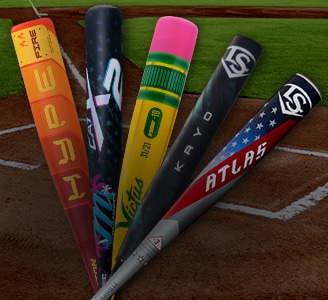What is VAR in Soccer?
Learn how soccer is going hi-tech to make the right calls with the use of a Video Assistant Referee.

Soccer is a fast-paced game. It’s a sport of continuous action where players are constantly moving for long stretches of time. But with so much to keep track of, mistakes are bound to happen. And referees, just like players, aren’t immune to error.
One way to help fix and correct missed calls is with the implementation of a Video Assistant Referee, or VAR.
As with any new technology, there are plenty of questions that first need answered. How do referees know when to use VAR? What type of fouls can be looked over twice? Are all scoring plays subject to review? Pro Tips is here with your guide to VAR.
WHAT IS VAR?
VAR’s main goal is to fix officiating errors made during the course of play. This process doesn’t just involve one singular person, like the name insists. Instead, at the professional level, the video operation room will consist of at least three people. They include:
- Video Assistant Referee: This is the referee that will speak to the head referee on the pitch via microphone. The video assistant referee can contact the head referee if a play, goal or situation should be reviewed. However, the VAR cannot request a review; they can only recommend it.
- Assistant VAR: The assistant can only speak to the head referee if the VAR is busy doing a check. However, their main job is to keep a record of VAR-related situations in the match. This can include recording how long a check takes, communication and noting any technological issues.
- Replay Operator: As the name suggests, this person is in charge of pulling video of the play in question. The video comes from the television broadcast, just like an instant replay.
Keep in mind, there can be more than three people in the room. Depending on how many camera angles there are in a match, there can be more than one assistant VAR. Any additional camera angles can include another assistant VAR in the room. However, there will always be only one head VAR and replay operator.
WHAT IS THE HEAD REFEREE’S JOB?
The head referee remains on the pitch and is in control of the match. Despite having a play reviewed by the video assistant referee, the head referee will make the final call. There are two different ways the head referee can signal the use of VAR. They can either look at the play or listen to the VAR’s input.
- If the head referee wants to see the play themselves, they must walk over to the touchline and provide an on-field review in a designated referee review area (RRA). Before making their way over to the RRA, the referee must make a TV signal by outlining a TV with their hands and point to the review area. After the check is over, the head referee will return to the pitch, draw the TV signal again and then announce their decision.
- If the head referee is only listening to what the VAR has to say, they will hold a finger up to their earpiece and hold their opposite arm straight out. After listening to the VAR, they will call their decision.
When looking at the play on camera during an on-field review, the head referee must be visible at all times. The RRA is not concealed inside a booth.
During a VAR check of any kind, field players must remain on the pitch. Coaches are not allowed outside their technical area. To understand where these locations are on the field, be sure to know the pitch with this Pro Tips soccer guide.
If a player goes over to the referee review area, they will be subjected to a yellow card. However, if a coach enters the RRA, they could be given a warning or immediate ejection. Players and coaches are also not allowed to mockingly draw the TV signal, which signals an on-field review.
WHEN IS VAR USED?
To be called upon, there must be a clear and obvious error or serious missed incident. Coaches and staff cannot request the use of VAR. Instead, VAR can be called upon in these four circumstances:
- Goal/No Goal: VAR can check if a goal counts or should be dismissed. A dismissal of a goal can be due to a foul on the play, handball or offside position. The referee should also look to see if the ball goes out of bounds prior to the goal.
- Penalty Kick/No Penalty Kick: If a referee calls a penalty kick, VAR can look to confirm if that is the correct decision or not. The video review should look for the location of the foul. If it is inside the box, then a penalty should be rewarded. However, if the foul occurred outside the box, then a free kick would be rewarded. Should a penalty kick be confirmed, VAR can also look at the goalkeeper facing the penalty and the kicker attempting the shot. For instance, a goalkeeper cannot step off their line until the ball is kicked and the kicker must kick the ball forward.
- Direct Red Card: VAR can go back and see if an opposing team denies a scoring team the chance of a goal-scoring opportunity. This can also include serious fouls, in regard to reckless intention. The head referee can check for violent conduct, which could include biting, spitting or using obscene language or gestures.
- Mistaken Identity: This check is primarily used on fouls. The purpose is to make sure the right player is being disciplined. For example, if two defenders are guarding an offensive player, and the offensive player is fouled inside the box, the VAR can check and make sure the right defender who committed the foul is given the correct discipline.
WHERE IS THE VIDEO OPERATION ROOM?
The video operation room houses the VAR, assistant VAR and replay operator. This room can be inside the stadium, at a nearby location or offsite. No coaches or players are allowed in the video operation room and will be ejected if they enter.
HOW LONG SHOULD REVIEWS TAKE?
There is no set time limit for VAR reviews. However, reviews and checks should only be made on clear and obvious errors. If there is hesitation to call for a review, then the check should not occur. If there is a need for VAR, the process should be as accurate as possible. Accuracy is more favorable than speed in this circumstance.
VAR is a recent addition to the game of soccer. The tech is constantly evolving in an effort to make the game more precise and credible. Fans should always remember, though, that referees are prone to human error. Before you kick back and watch your favorite teams, be sure to familiarize yourself with the rules of VAR.
Looking for more ways to help enhance your soccer knowledge? Be sure to sharpen up on player positions and responsibilities with these extra Pro Tips.








